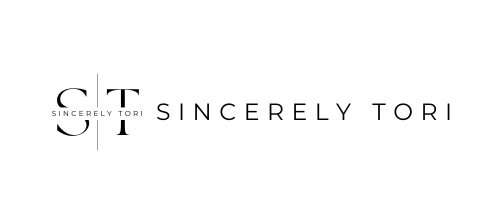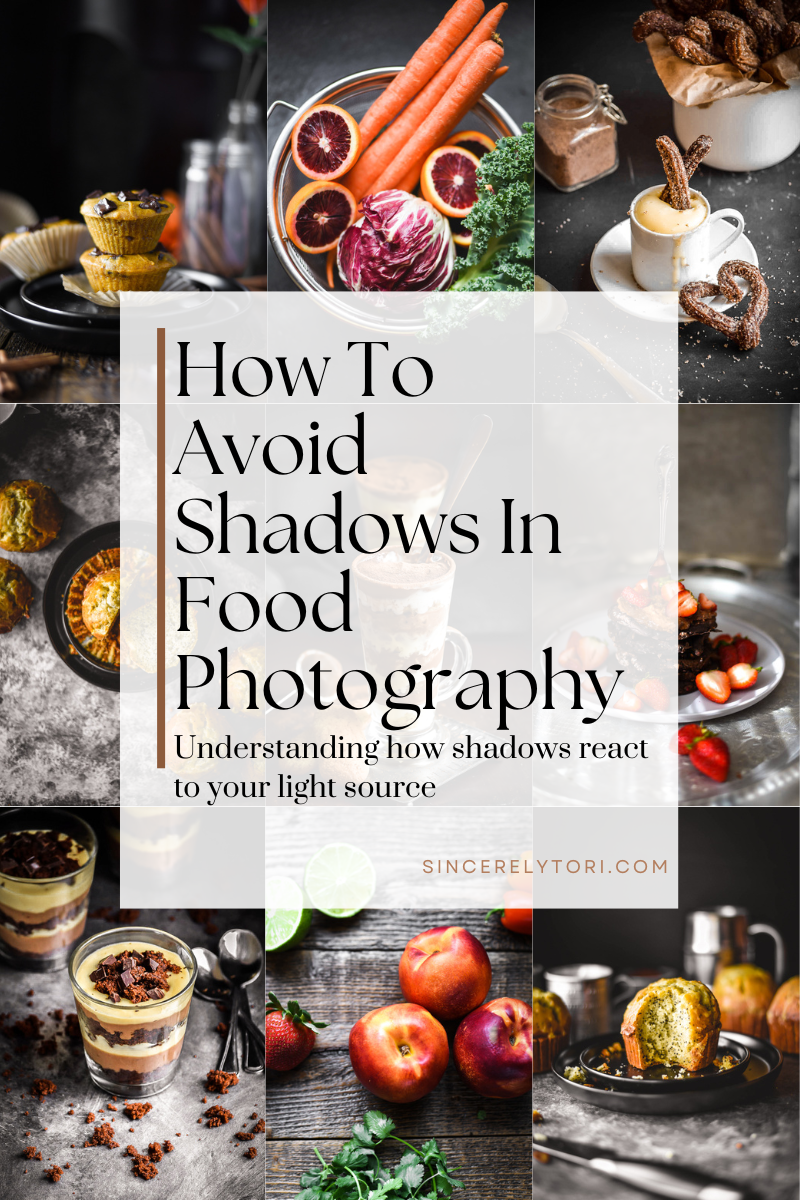
How To Avoid Shadows In Food Photography
Food photography is all about the light. A food scene can be perfectly styled, and look delicious, but without good lighting it will be very difficult to get great results. When it comes to lighting food photography, a challenge many new food photographers face is how to avoid drastic shadows. This is especially a challenge when using harsh sunlight as your light source. So you may be wondering, how do food photographers deal with shadows?
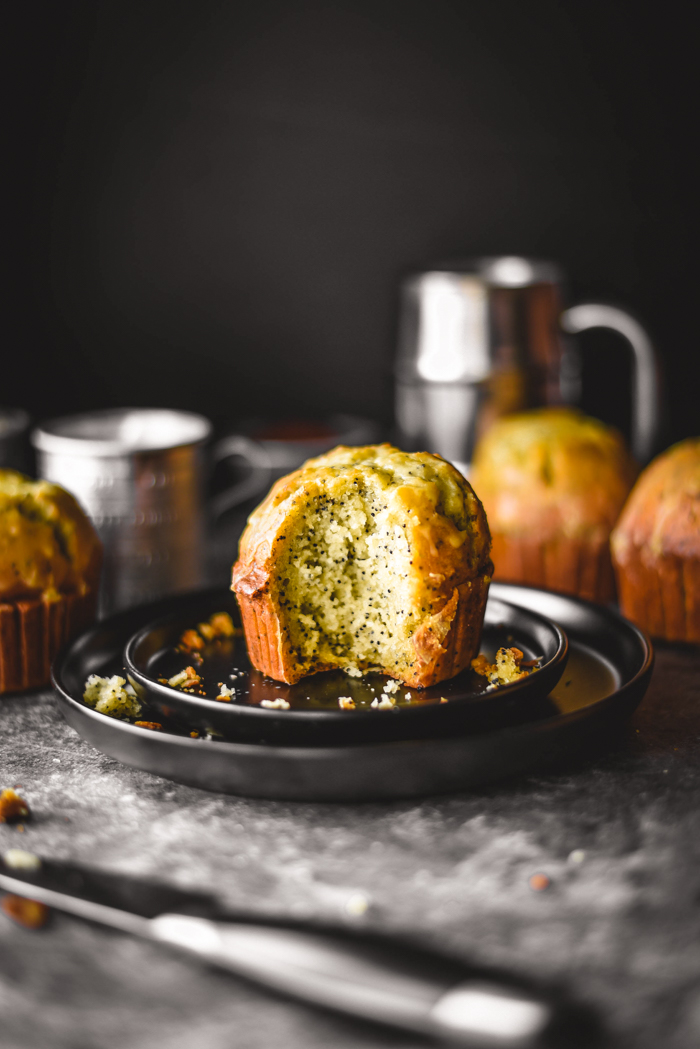
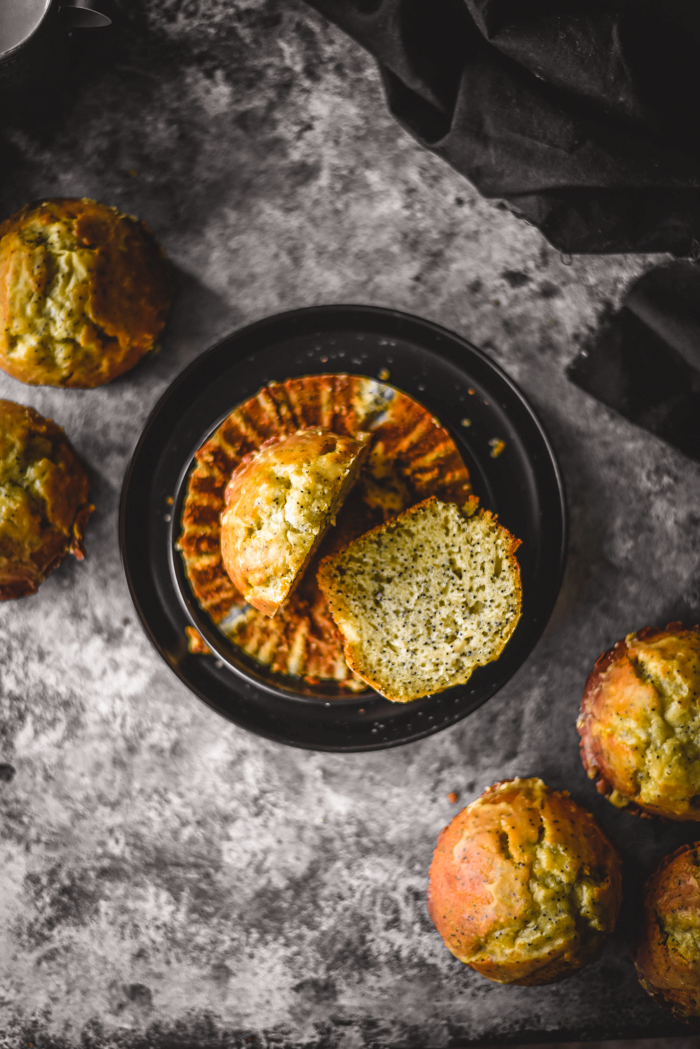
How can shadows be avoided in food photography?
Shadows in food photography can be avoided by using soft filtered light and reflectors This can be accomplished in multiple ways, using nature’s help and shooting on a cloudy day, using a modifier of some kind to soften natural light, or using filtered artificial light. Adding reflectors will bounce the light back and create even lighting on your scene.
Keep taller items further from the light
When placing items in your scene you’ll need to make sure that the taller items do not block shorter items relative to the light source. For example, a wine bottle and a glass of wine. You would want to place the bottle of wine further away from the light than the wine glass to avoid it casting a tall shadow across the wine glass.
Avoid unwanted light sources
Another thing to keep in mind is to make sure there are no unwanted light sources adding to your scene. This could be interior lights in a room you are photographing in, separate windows, computer screens, or anything else adding light to your scene. Any additional light can be casting slight shadows on your photo or adding mixed color hues you don’t want. Having mixed color hues will make it difficult to balance the color in editing. You can see this in the photos below.
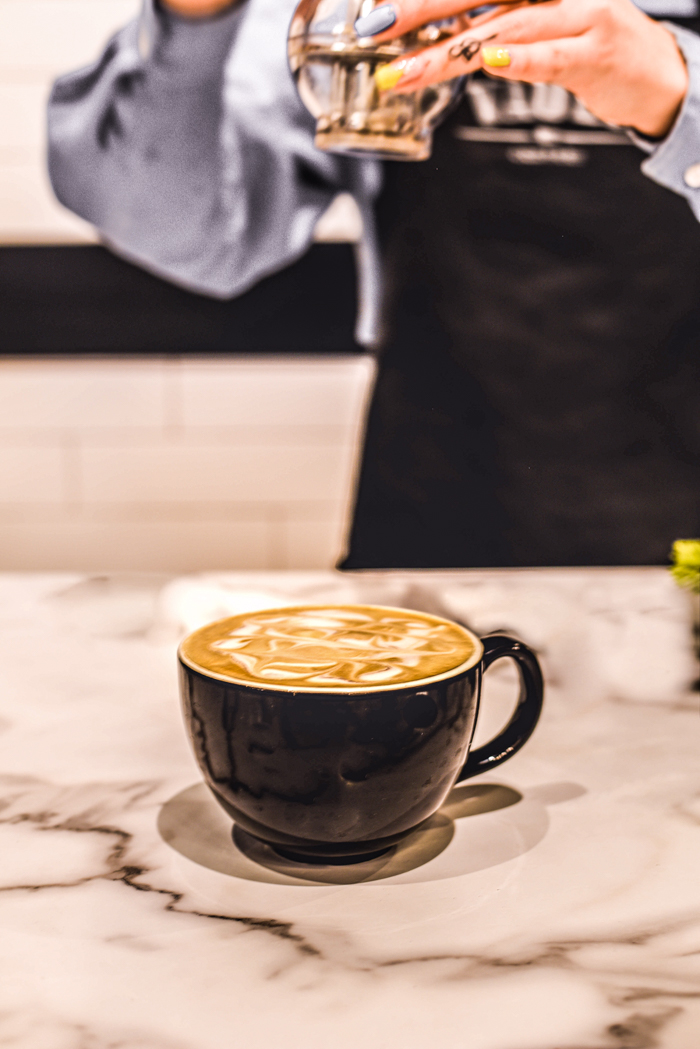
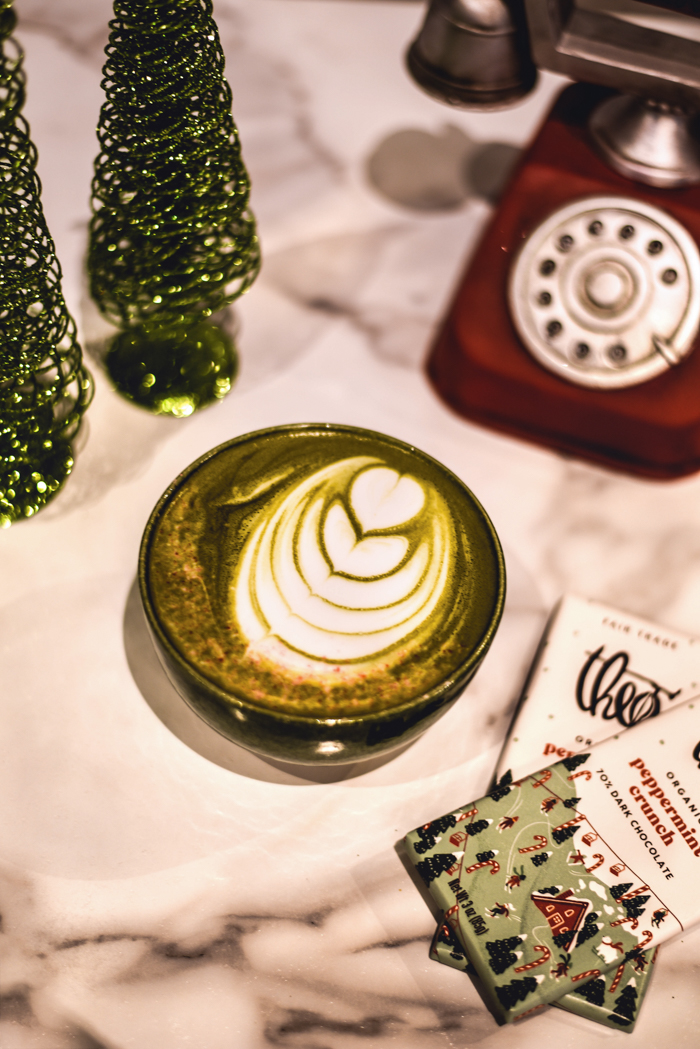
Understanding how shadows react to your light source
Shadows occur when light is partially or completely blocked by an object. The two factors that affect shadows are the distance and size of the light. These two factors will control whether a light source is soft or hard.
Control shadows by adjusting distance
You can adjust shadows by moving the objects in your scene closer or further away from the light source. It may seem counterintuitive but when objects are closer to the light they cast harsh long shadows. This is because the object is blocking more of the light source.
In the reverse, the further an object is from the light the softer the shadows will be. You can test this rule of shadows by using a flashlight and your hand pointing towards a wall.
Control shadows by adjusting the size of the light source
The size of your light is also very important. The smaller your light source is, the larger the shadows it will cast. You can see this principle most often with the sun on a cloudless day. The sun is very bright but very distant and so it casts harsh light on the surfaces of the earth. This is known as hard light.
The larger the size of a light source, the smaller the shadows will be. You can see this when clouds are present, the size of the light source (the sun) is diffused and becomes much larger. This creates soft light.
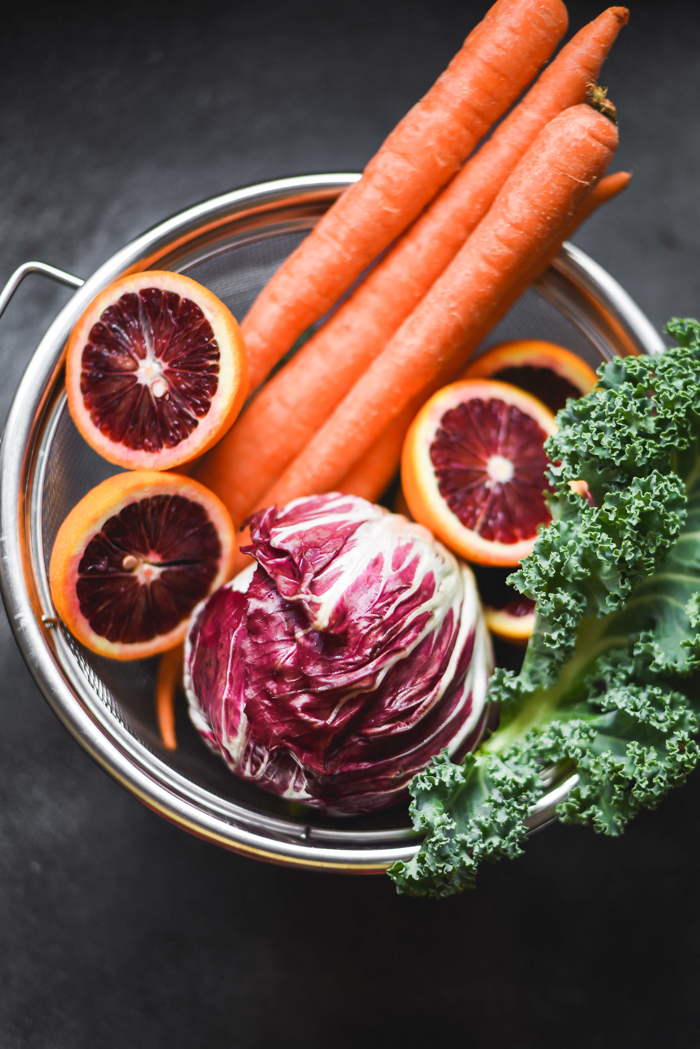
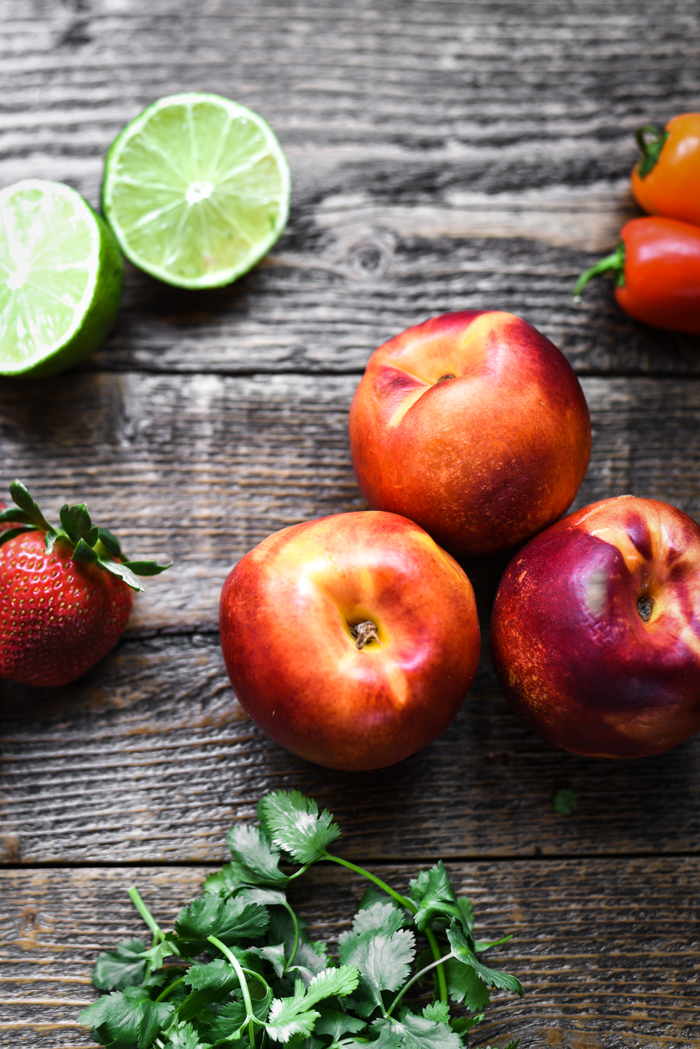
How to avoid shadows when using natural light and a diffuser
Sunlight is a favorite option of many food photographers. It’s free, natural and easy to access. The downsides of natural light are that it is ever-changing and unpredictable. It will be different day to day depending on the weather, season, your location, time of day, and even more factors.
To avoid shadows while using natural light you will want to use something to filter the light such as a a diffuser or even something as simple as white bed sheet. (You can purchase a diffuser/reflector set on Amazon) This will soften the light coming through to your image and create a lovely glow.
Adding bounce cards, also called reflectors, will help redirect some of the light back onto the food and create a more evenly lit setup. You can get bounce card very inexpensively online (Amazon has them) or use white poster boards from a local craft store.
How to avoid shadows when using natural light on a cloudy day
This will be much the same as using natural light with a diffuser, as mentioned above, and you will need to follow the same directions. However, using simply a cloudy day to take photos will be easier said than done.
Unless you live somewhere that is often overcast you may find yourself frustrated for not being in control of the weather. Although, If you can catch a dependable cloudy day you’ll essentially have a giant light box from the sky. This may be the simplest way to take photos without shadows as it doesn’t require any special gear. You can set up your photo shoot near a window or outside.
Keep in mind that clouds may shift and you may get streams of sunlight at times that can cast unwanted shadows on your setup. You can keep a diffuser around just in case you need to filter harsh sunlight popping through the clouds. An overcast day can also darken pretty quickly and become too dark for taking photos so be prepared to work quickly to capture your images when the lighting is best.
Here again, as mentioned above, you will likely want to set up something to bounce the light back onto your scene if the shadows are a bit harsher than you’d like.
How to avoid shadows when using artificial light
When using artificial light you’ll need to use soft boxes or diffusers to filter the light and make it look natural. Some advanced photographers may also include flashes in their lighting set-up to act as a fill light. This is not necessary when you are just starting out as it takes time to learn how to properly use flash in food photography.
In this scenario, as with the rest, you will again want to include something to reflect back the light to help soften any shadows your single light source is casting.
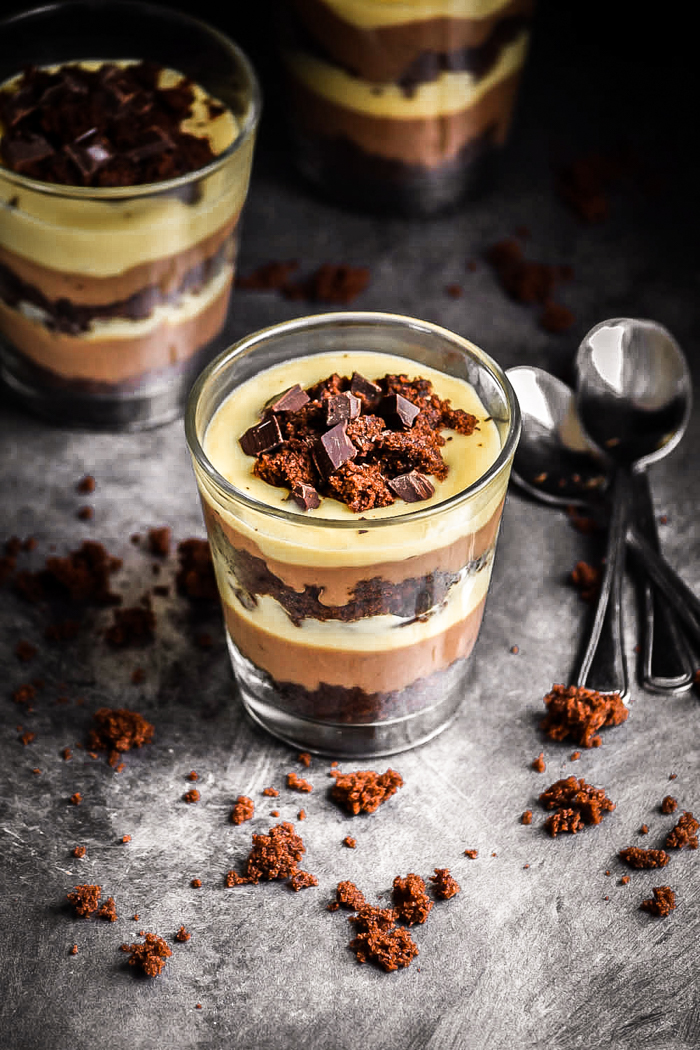
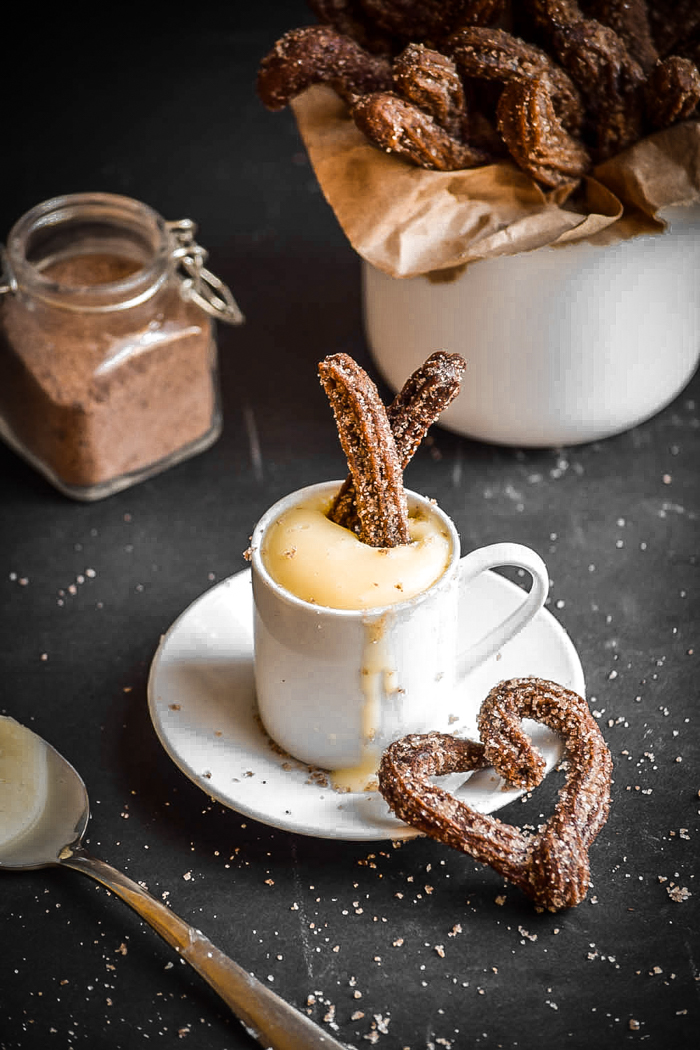
Why you may NOT want to avoid shadows in food photography
Being able to get rid of shadows and have perfectly soft and even lighting is great for many kinds of photography like portraits. The best way to completely avoid visible shadows in a photo would be to light a subject from the front. However, food is a subject that can easily become flat and boring looking when lit from the front.
Shadows used gently can be a very nice addition to a photo and create dimension and interest. Without shadowing you won’t be able to show as much detail, create eye-catching contrast, or have a lot of tonal variation. Instead of focusing on avoiding shadows, think of it more as controlling shadows.
Use directional light in your photos
Food photography loves directional light. It is the best type of light for food photography, specifically side light or back light. If you light food from the front you will lose much of the detail and texture that makes food look delicious.
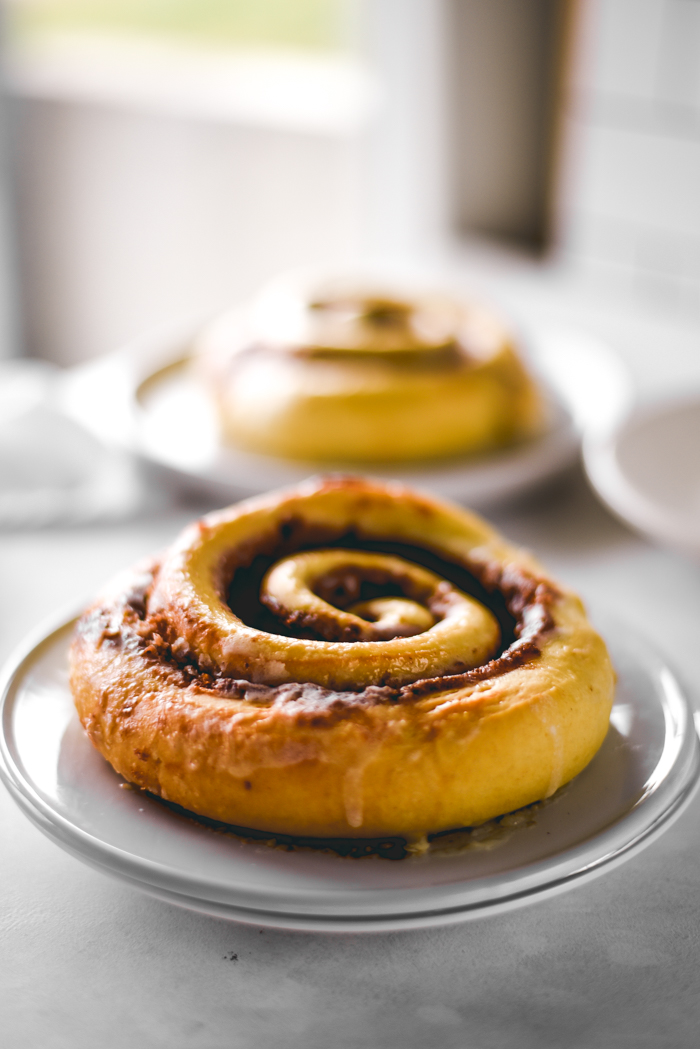
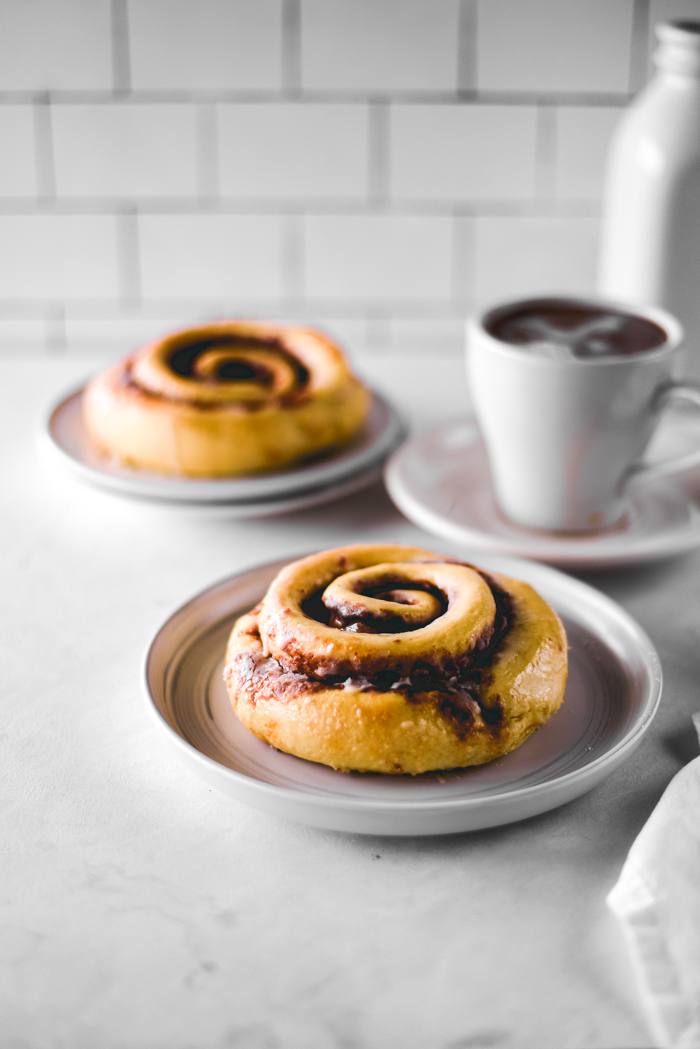
Using shadows to your advantage
There are many styles in food photography and one popular style is dark and/or moody photos. You can use shadows to create drama in a food photo and really tell a narrative around the food.
To get this look you’ll need to use dark backgrounds and surfaces, and neutral or dark dishes in your scene. You can darken the background by blocking light from any direction except a a small section where you let your primary light source in. If your scene is still too bright you can use black reflector cards or poster boards to absorb more of the light.
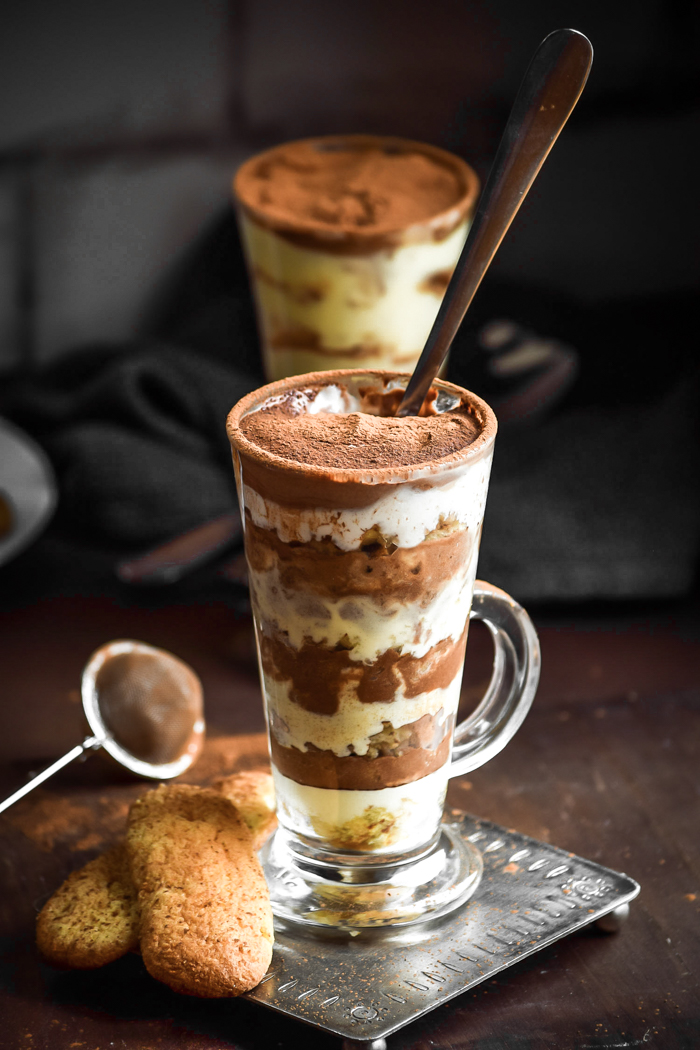
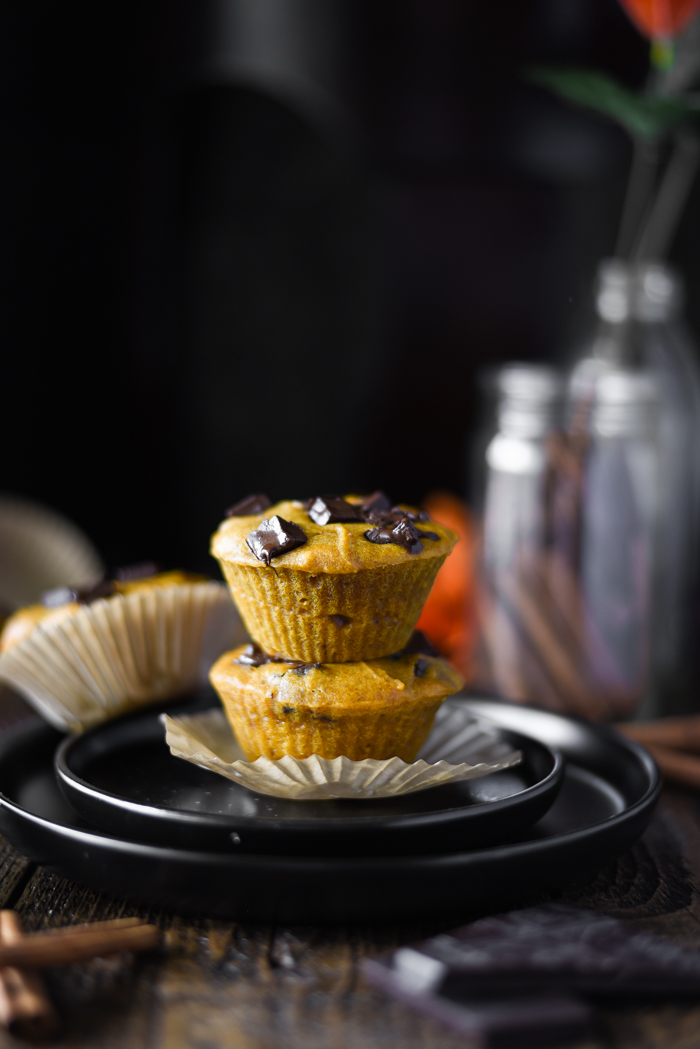
Creative ways to use shadows in food photography
You can get creative with using shadows and cast unique shadow patterns using a GOBO. What is a gobo, you may ask? GOBO stands for go-between-object and can be any item that allows light to pass through and create interesting shadow patterns.
Some examples of items you may use as a GOBO are window blinds, nets, thin or transparent curtains, etc. GOBOs are perfect for when you want to make photos in a studio look as if they are taken outside in a natural setting. For example, the way light shines through trees and creates patterns on a forest floor. This look can be mimicked by using an object like a foam core board with holes cut into it.
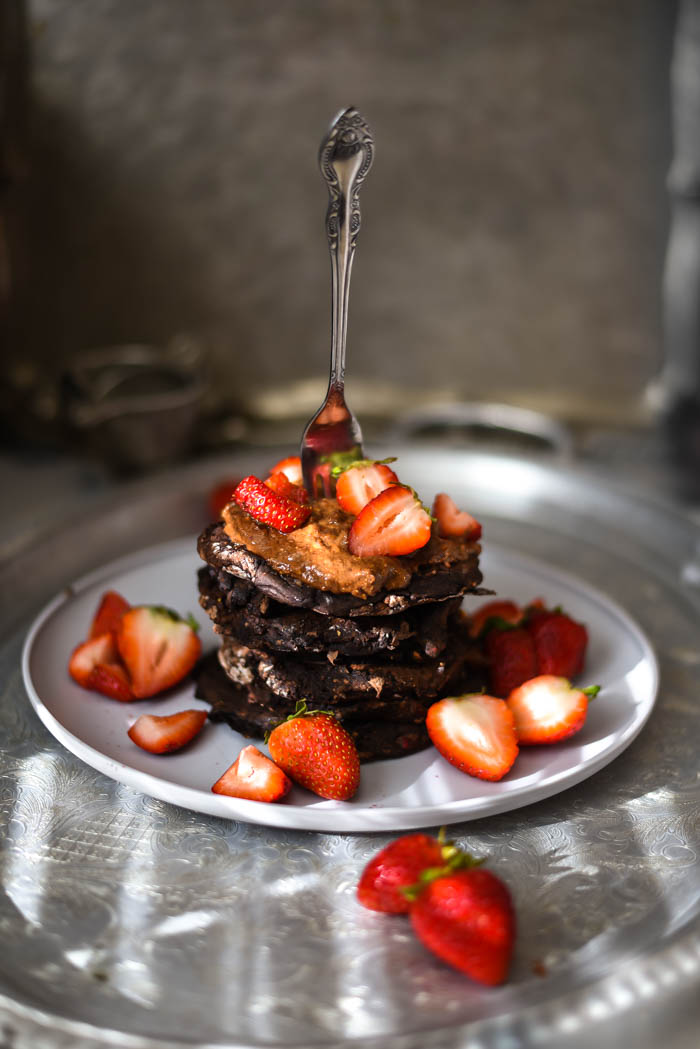
Conclusion
Shadows are crucial for taking great food photography, but like anything in life, balance is key. The best way to learn how to avoid harsh shadows and use moderate shadows to your advantage is to try out many different things.
Test lighting from different angles, using different kinds of light, and taking dark moody photos. This will not only help you develop your own unique style, but it will teach you how light and shadows respond to manipulation. With enough practice you’ll be able to intuitively know how to best light your scenes in future and create beautiful food masterpieces.
If you enjoyed this post please give it a share to Pinterest!

This post contains affiliate links. This means, at no additional cost to you, I will receive a commission if you purchase something with my link. You can learn more here.



